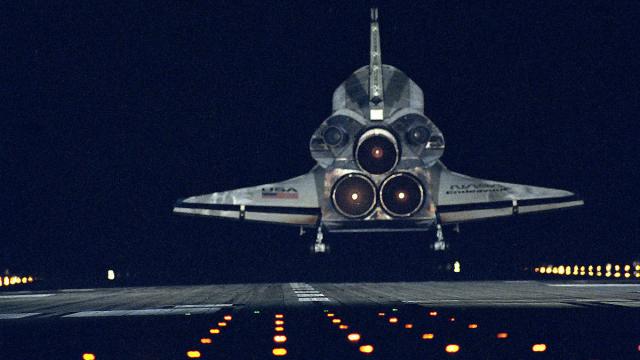Astronaut Daniel T. Barry thinks NASA’s mission to Mars is humanity’s most important endeavour yet, for reasons including the birth of Captain Kirk. We talked to him about what it’s like to explore the Final Frontier.
I met Daniel T. Barry through Elliott Jessup, head of the California Academy of Sciences‘ “twilight zone” dive team — an elite group using closed-circuit rebreathers to do science at record depths for humans. Because there are strange similarities between space and deep-sea exploration — fear of the bends, pre-breathing, decompression, special suits that rely on CO2 scrubbers — and because Barry himself is a diver, I thought the retired astronaut might provide good background for an (upcoming) article on the Academy’s next-level sci-diving team.
Instead, he delivered a treatise — on teamwork, cowboys, team-building, everything that’s wrong with Gravity, courage, risk, the unbearable beauty of space, and why everyone needs to go — that was too good not to share. Three missions, over 734 hours in space, and 26 hours outside the shuttle itself, floating through stars and darkness: Dan Barry is a man who knows things.
IndefinitelyWild: You do most of your EVA [extravehicular activity] training underwater, is that right?
Dan Berry: Yeah, we go into the biggest pool in the world, down at the Neutral Buoyancy Lab at Johnson Space Center, and they pretty much put an entire space station — and when I was there, a whole shuttle as well — underwater. And then you go through the whole spacewalk protocol right there.
It’s not 100 per cent the same: When you’re upside down underwater, for example, it’s pretty uncomfortable because your blood goes to your head and your weight rests on your shoulders and it gives you big bruises up there, whereas in flight, being upside down doesn’t matter. Plus the water provides resistance, so when you pull on a handrail underwater, you go a little ways and you stop. When you’re in flight and you pull on a handrail, you just keep going until you can grab another handrail and stop yourself. So yeah, there are some differences between underwater and in flight, but in terms of actually getting a task done — when you’re clamped into the site you’re going to work at — it’s very, very similar.
IW: How many steps are there in an EVA pre-check?
DB: Oh, ha. I mean, the checklist just to go outside is something like 270 steps, and the other crew will help you with that. On my last flight we had a guy who was a marine colonel, and his job was just to make sure we got all the steps done. I thought that was great, because colonels are really good at making sure you get all your steps done — and you don’t want to go outside with one not done.
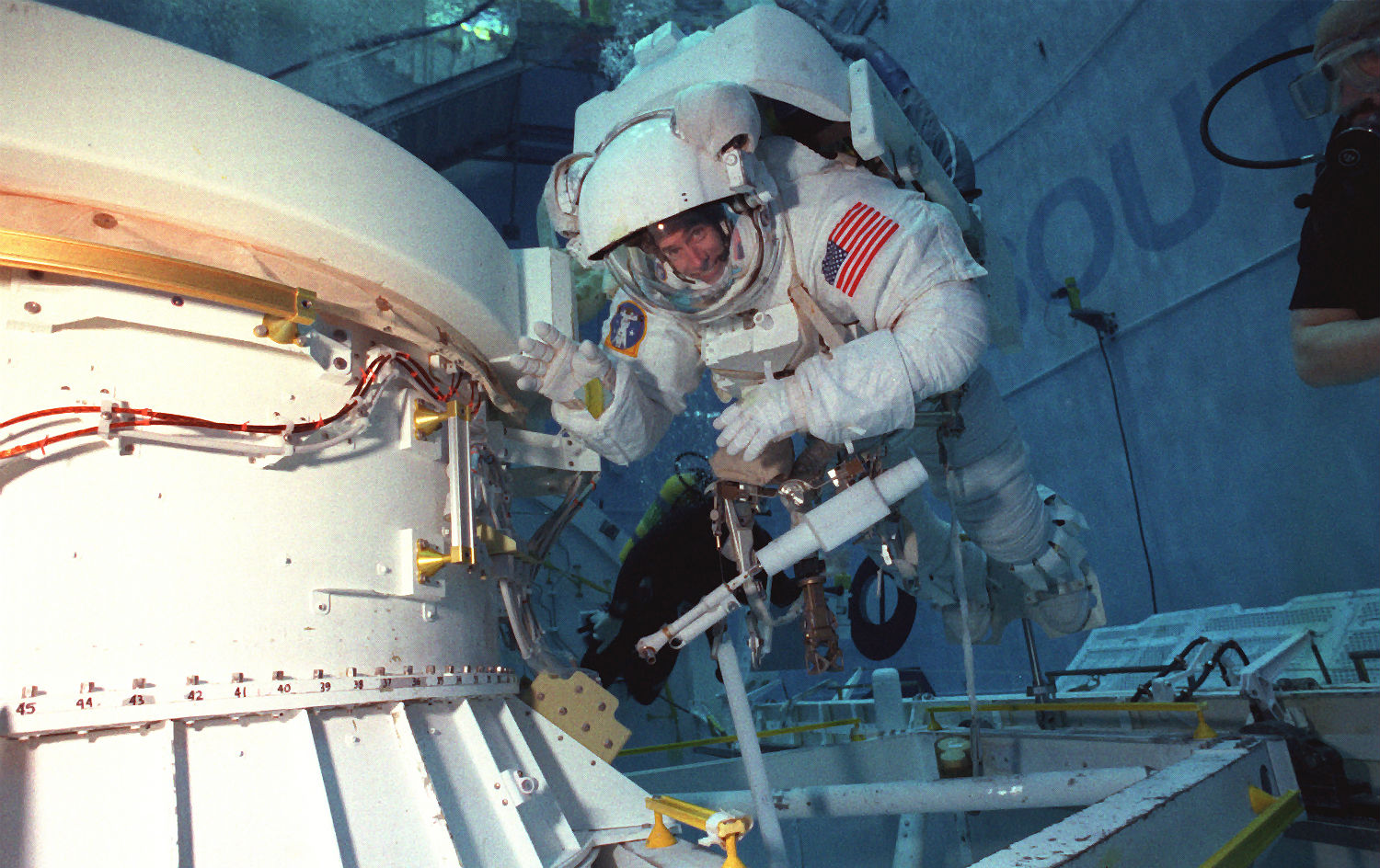
IW: What kind of personality traits do you think are necessary for working successfully in environments so hostile to human life?
DB: I think one of the reasons astronauts these days are picked when they’re in their early to mid-30s — as opposed to brand-new, fighter-pilot types in their early 20s — is that you want somebody who’s been in challenging situations before, and who’s going to be pretty methodical about the whole thing. Somebody who has an understanding of how to get through an unexpected situation, and work as a team, and be the person I can rely on if I have a problem; to know that they’re going to bring me back inside. So yeah, there’s a real professionalism that [NASA] very much looks for in selection, and then they hone and train that over the course of the years that you’re in the process of getting ready to go.
In fact, people ask me what I thought of the movie Gravity, and I’m fine with all the mechanics that weren’t right — to me that’s like Clint Eastwood has 12 shots in his six-gun; I think that’s fine — but I did have something of an issue with the portrayal of the crew. First of all, they didn’t know each other very well. Like, “Oh, you have a kid?” when in fact by the time you actually fly with somebody, you’re best friends; you’ve trained side-by-side for a year. And then the idea that you get knocked off the space station and you’re just sort of tumbling over there and you’re like, “Oh my god, help me!” — that’s just not the way people would react who are outside. It would be like, “OK, this is what’s happening, here are the consumables, let’s get this straightened out,” and then that person would get the heck off the com and let other people work it.
And then there was the cowboy guy, George Clooney’s character — that’s another stereotype that doesn’t exist in reality. There was a certain amount of cowboy in the early days when it was all fighter pilots, but “cowboy” is not a great attribute for an astronaut, because you can’t do it by yourself. The systems are complex enough that if one person tries to just be like, “Get out of my way, I’m taking over,” they’re gonna fail. And some people do start a little bit with that attitude, but once they have been in the simulator a few times and started to try to take over — and you know, the rest of the crew’s pretty savvy, so they will just step back and let that person do it — they fail miserably. Then we go to the debrief and they get the message. And by the time you’re actually even assigned to a flight, much less ready to fly, you’ve figured out that this is not a one-guy-takes-over-and-wins-the-day scenario; this is a group of people working together to solve a really hard problem.
So it’s really fun, because you’re in a place where you’re respected and you respect the people that you work with to the point that you’re trusting your lives to each other. And you do that together for long enough — flying jet aircraft at 600mph 3 feet apart, or going to a launch-pad where there’s a fire — and you’re committed to dragging each others’ butts out of there. That kind of camaraderie and professionalism and respect, there’s just no other place I’ve ever been that comes close to how enjoyable that is.
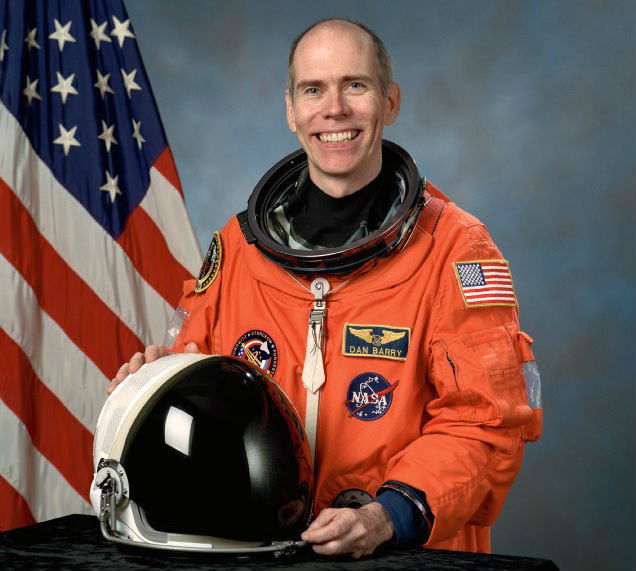
IW: But there are millions of really professional, capable people who could still never do that kind of work. So how do you talk about that other necessary piece — the courage, or whatever you think it is?
DB: Well, I don’t know that you ever talk about courage, but the exploration aspect is very much on people’s minds. I mean, there are a lot of sci-fi fans in the astronaut core. And we do other things together — like a lot of crews do Outward Bound trips together as part of the training process, where you go out into the wilderness and just, you know, survive — and of course flying jet aircraft together. So I don’t think it’s necessarily an explicit, “Oh, aren’t we courageous,” but you do recognise people who have similar values to the ones you have.
And the risk is certainly discussed. I mean, there’s no question that we were very cognisant of the degree of risk. Two shuttles went down and our friends died, and there were aircraft accidents where friends died. When you’re in quarantine the week before launch, lawyers come over and you fill out a will, and you’re there with your spouse and it’s very … it’s not swept under the rug. We all understand that we’re taking a risk and we’re asking our families to watch us take this risk, so it’s not like, “Oh, we’re all very brave and we’re not worried about this.” Yeah, if you’re not worried, you don’t understand the equation. But there’s a choice that you’ve made in your life to take that risk, and you feel that the reward is good enough, and somehow you’ve convinced your family that it’s something you want to do, and somehow they support you. But yeah, the risks are out there.
IW: You referenced NASA’s selection process earlier, can you elaborate on that? Any criteria that might surprise people outside the agency?
DB: Yeah. You’re looking for team players, but you’re also looking for people who — like, one of the questions in the interview is, “Have you ever been in a life-threatening situation?” And you’re looking for people who’ve put themselves out there and shown an ability to reel it back in, but who at the same time aren’t wearing that on their chest. In fact, if anything they should be a little embarrassed that they got into a box, instead of being proud that they were able to get back out of it. So I think you’re looking for people who are accomplished, but don’t wear it.
And the other thing — and this was an interesting insight from being on the other side of it — is that you get down to about a few thousand applications, then interview about 80, then select 20, and by the time you’re interviewing the 80, probably 70 of the 80 can absolutely do the job. Heck, probably all 80 can. So you have to face the fact that you’re not going to be able to select the best one, because there’s just no way to tell. In an interview, even if it’s a week-long interview and you have all these references, you can’t tell who’s the best one. So what you do is, you say, “You know what? I’m not going to bang my head against the wall to try to get the best one. What I’m going to try to do is not get any bozos.” Because it’s ok if a guy isn’t the very best guy you’ve ever seen as long as you’re 100 per cent sure you’re willing to trust him with your life. It’s more important to select 20 non-bozos than it is to try to get the 20 very best.
IW: Any lessons for actually building that team once it’s chosen?
DB: Taking the team out of the local environment and putting them off by themselves somewhere is always a good idea, and there’s a variety of things NASA does along those lines. Like, you can do cold-water survival in Russia with the Russian army — that’s a good bonding experience — or you can all go work in Antarctica for a while, go live in an underwater facility for a couple months, go do volcanoes someplace or something, as long you do it with some kind of structure. Because it’s really important to trade the leadership role with that stuff; even people who aren’t going to be commanders in the mission need to take that leadership role, both so the commanders can get a sense of what it takes to be a follower, and so that the people who follow can be in a position where they can appreciate what it takes to make some of those hard decisions.
One of the other aspects of training we do is we own up very quickly when we make a mistake — and that’s critically important. If you hit the wrong switch when you’re in orbit, the worst thing you can do is flip it back and not tell anybody. Because what’ll happen is they will see that switch flip on the ground, and they won’t even say anything to the crew because they don’t want to bother them. So then NASA will have some poor guy down there work for 24 hours to see if there was a momentary short-circuit in that switch.
When you make a mistake, you call it down, end of story. And as long as everybody does that, as long as everybody owns up to it right away, it leads to trust, it shows that everybody’s human, and you know, there but for the grace of God go I. It also leads into the issue of, if you don’t understand what’s going on, be quiet at first and let other people solve the problem, but then at the end own up that you don’t understand. And maybe that’s because you didn’t study the right stuff or whatever, but this issue of just being naked in front of your colleagues — I screwed up, or I don’t understand — is so incredibly important. I found that to be one of the most important aspects of training, and it’s the leaders who have to put that in place. You have to see John Young, who flew six times, say “OK, I’m an idiot, I did this.” Then you say, “OK, I get it. Everybody screws up. Even John Young screws up, and he admits it.”

IW: In your experience, is there an early common denominator among people driven to be astronauts?
DB: Well, people come from a lot of different points of view and perspectives. I wanted to fly in space since I can remember — absolutely as long as I can remember. My plan was always to be an astronaut, and that’s true of a lot of people in the office, though not everybody. Particularly, when I was there, it was not true of many of the women, because when they were little girls, women couldn’t be astronauts. So a lot of them will tell you, “I realised when Sally Ride went up that it was a career opportunity for me,” and for a lot of them, that was when they were already in college.
But I do think there is pretty much uniform commonality in terms excitement about flying at a really early age. Plus there are some divers — Mike Gernhardt is a good example of a guy who was in our class and was a professional diver who did oil rigs and that sort of stuff, and did his PhD in gas exchangers — and then Mary Ellen Weber was a champion sky-diver and a PhD in material science. People come to it from a lot of different directions, but in general they’re people who have a need for speed. Like, there was another guy who was an ER doc and also did Olympic luge. So yeah — most of these people like going fast.
IW: Did going to space change the way you think about Earth?
DB: Yeah, it did. I didn’t think it would, because I thought, “Well, I’ve seen a gazillion pictures” — I thought I pretty much knew what the planet looked like. But in fact your eyes tell you a very different story. Film doesn’t bring back the beauty of the Earth. It really doesn’t. And I was so surprised by that.
There’s not enough dynamic range in cameras to see the whites of the clouds and the black of the sky next to them, and there’s not enough colour depth yet to bring you back the green of the Amazon and the tan of the Namibian desert, and the Himalayas with the golden sun going off them — you just can’t see it. And part of it of course is that you’re seeing with your eyes in a different way than a camera does, but you’re also in the environment. You’re floating, and you’re at the window, and it’s real, and it’s passing by.
You can see forest fires in the Amazon whose smoke extends to Hawaii; you see dust storms in Africa where the dust cloud goes to the Bahamas. So you really sense that this whole world is connected. And then you look at the atmosphere — and this atmosphere is like 50 miles thick around an 8,000-mile ball — and you realise that this really, really thin field is all that’s between us and this really nasty outer space stuff. It’s not like there’s a wall. If you jump high enough, you’re in outer space. Just flying through it, flying through the aurora, you really get a sense of the delicate nature of the environment we live in.
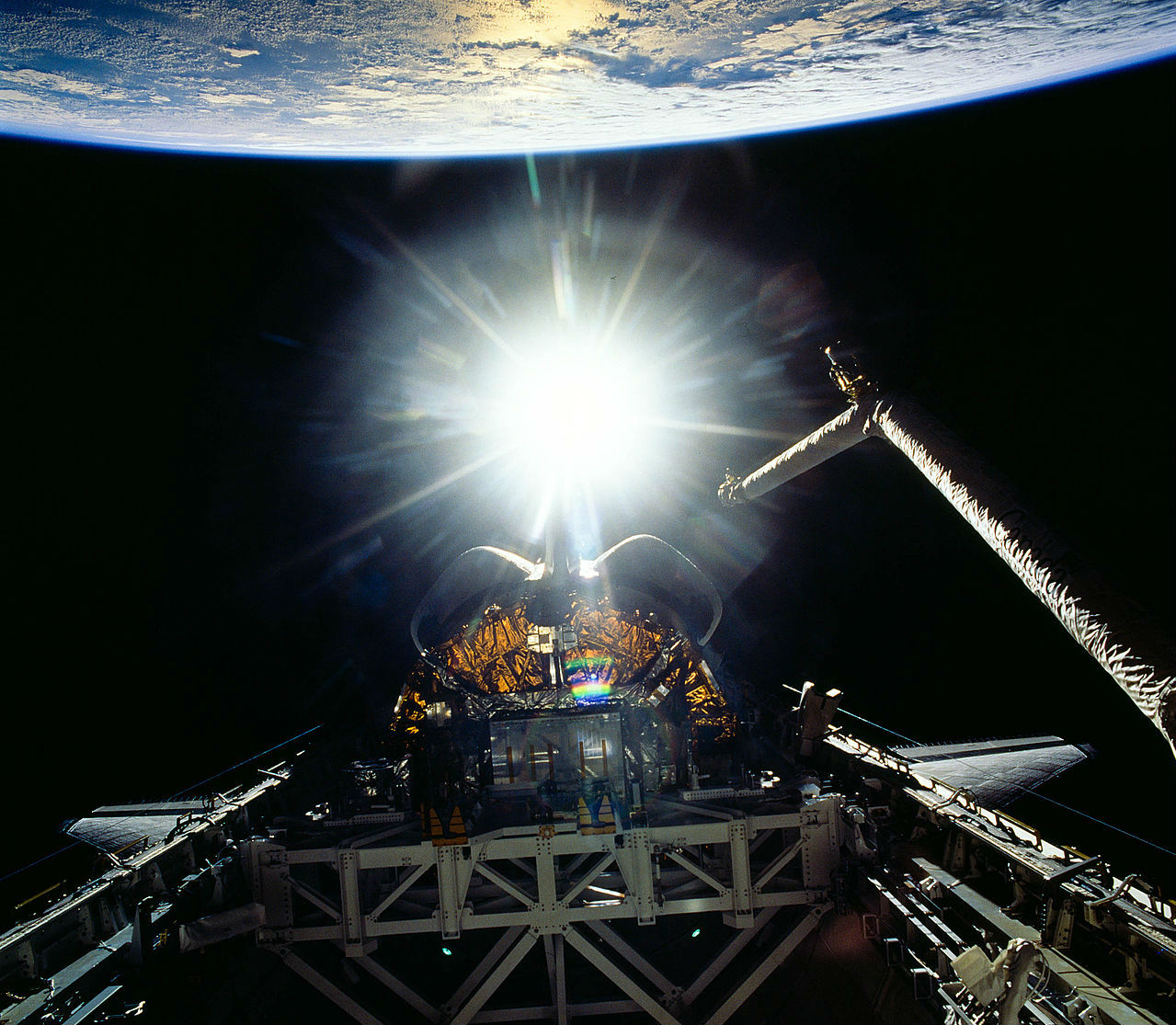
IW: That was … jeez. I want to go to space.
DB: Me too!
IW: Did it make you think about people differently, say as a species?
DB: Oh absolutely. You know, people talk a lot about how there are no borders from space, and there actually are — forestry practices and agriculture actually makes it not very hard to see a lot of borders from space — but to a certain extent it kind of shows you the insignificance of people. When you look down during the day, you can’t really see any evidence that there are people on Earth. I mean, maybe the contrails over Chicago — you can see those, and you can sometimes see ship-wakes in the English Channel — but for the most part cities are just sort of grey splotches.
But at night, the city lights…. When you fly over India at night, it’s like someone strung Christmas lights along the whole coast. The interior is dark but the coast is lit up with city lights, so you see the shape of India all in lights. And that’s really the only evidence that there are people on the planet: On the dark side, you see city lights. So you have this sense that on the day side, yeah, people are pretty much irrelevant to this planet. But then on the night side, it’s like, wow — they’re all over the place now.
IW: What do you think about non-astronauts, just regular people, going to space with private companies someday?
DB: Oh, I think everybody ought to go. Everybody really needs to see this thing. I mean, just seeing the layers of blue in the atmosphere — who knew? When you look at the atmosphere, there are 16 layers of blue, all distinct, from the very lightest turquoise blue to the darkest, deepest midnight blue you can imagine, all distinct layers. There are just so many things. I mean, look at the aurora! There are just so many things that people should see about our planet. I think more people should go.
A lot of people ask me how we can justify the cost of space flight, and why don’t we just use robots because then we could get just as much pure science done for less money and no risk of life, and to a certain extent I’m board with that; I think if what you want is physical-science type data, then sure, send the robots. But the point of human space flight is actually to ensure the immortality of the human species. So what we need to do is go to Mars and have an independent colony on Mars, which is technically doable now and probably reasonably doable in a total of about 100 years. Because if we have a colony on Mars that’s really completely independent of Earth, then no extinction event can kill us all anymore — not asteroids, ecological issues, bioterrorism, whatever it is. And if no single extinction event can kill the species, then the species is effectively immortal.
We’ll go to the rest of the planets, we’ll go to the stars, and we’ll populate the galaxy. But we have it within our grasp right now to make our species immortal. And the other things that come back from space — you know, the Teflon, the other innovations — that’s icing on the cake. That’s nice to have while we’re going about the business of making our species immortal, and that’s why we spend the money. But it’s about species immortality. It’s about ensuring that Captain Kirk gets born and Star Trek happens and we populate the galaxy. And we can do it. And we ought to just go do it.
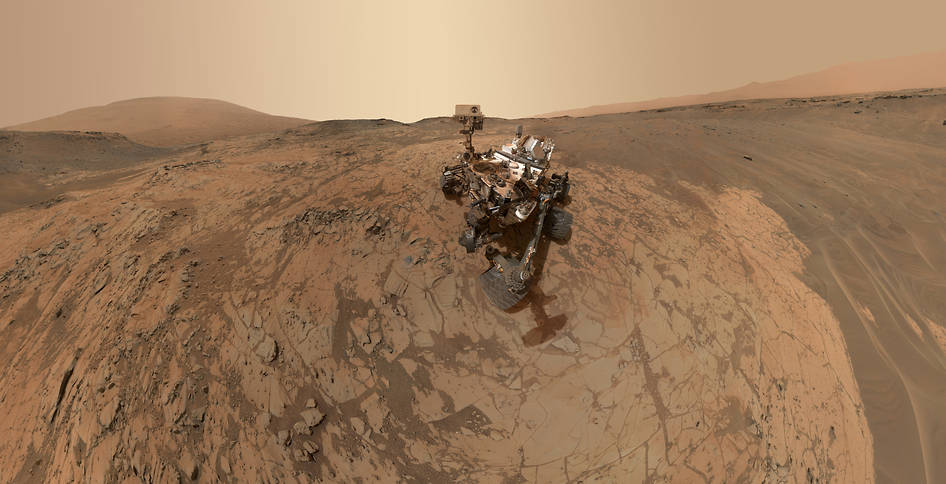
IW: If NASA asked you to start our first Mars colony tomorrow, would you go?
DB: Well, not unless my family goes with me.
IW: Would they go?
DB: [Laughs] I don’t know — I’d have to talk to them. Because you know, maybe the first crew or two can be round-trip to Mars, but after that it’s really a one-way deal. Forget about sending people and bringing them back, forget about it; it’s too expensive. So it’s kind of going to be like the American West, you know. It’s not going to be a pleasant life. It’s going to be living in caves, digging, scraping. It’s going to be tough.
But you know, somebody wrote a blog the other day saying, “I don’t understand this Mars colony thing. If we want to do a colony in a real place, why don’t we just put a colony in Antarctica?” And I was like, that’s the stupidest thing I’ve ever heard. What the purpose of a colony in Antarctica would be, I can’t imagine. It’s not going to make the species immortal, and the kids are going to leave! The kids would be like, “It’s so boring in Antarctica,” and as soon as they can, they will leave. But the kids born on Mars, they can’t leave! They’re stuck. They’re stuck economically, because who’s going to give them a ride home? And, they’re probably stuck physiologically, because they will be born and raised in one-third g, and 1 g is really going to hurt.
IW: Hearing you talk about the job — what you see up there, the camaraderie of a crew — I can’t think of anything harder to walk away from. Do you miss space?
DB: Oh yeah, are you kidding? I’d go tomorrow. When I first got to NASA I’d see people retire and I’d be like, “Why would you ever retire from here? They must be crazy.” But you know, I’d flown three flights and my next flight was probably going to be about 5 years away, and in the meantime I’d been commuting from Houston to Boston, where my wife taught college, and it was my son’s last year in high school. So yeah, it was a tough decision, but it was the right time to go.
And the last part of that decision, frankly, was that we could already see that the shuttle was going to end, and there were a lot — a lot — of people in our office who had never flown. I mean, I got there in ’92 and flew four years later, then three years after that, then two years after that, and in NASA terms that’s three flights really close together. So it was hard to justify taking a seat for my fourth flight when there were people who had been there four or five years and still didn’t even have their first flight assignment. And you know now, at this point, people are waiting 8 or 9 years for their first flight.
And I’ll be honest: Nothing compares to that very first flight. When you first go, it’s your dream come true. You wanted to do this for forty years, and you get to do it. And it was very hard to think I might take that away from somebody. So there are a lot of reasons you choose to leave, but it’s still hard to walk away. Best job in the world, by far.
IW: Do you dream of space?
DB: You bet. The way I go to sleep is, I’m walking out to a plane, I step off the curb, and then I fly over to the plane and I’m out. It’s little imagination thing I do; that’s how my brain is trained. I dream of flying every single night.
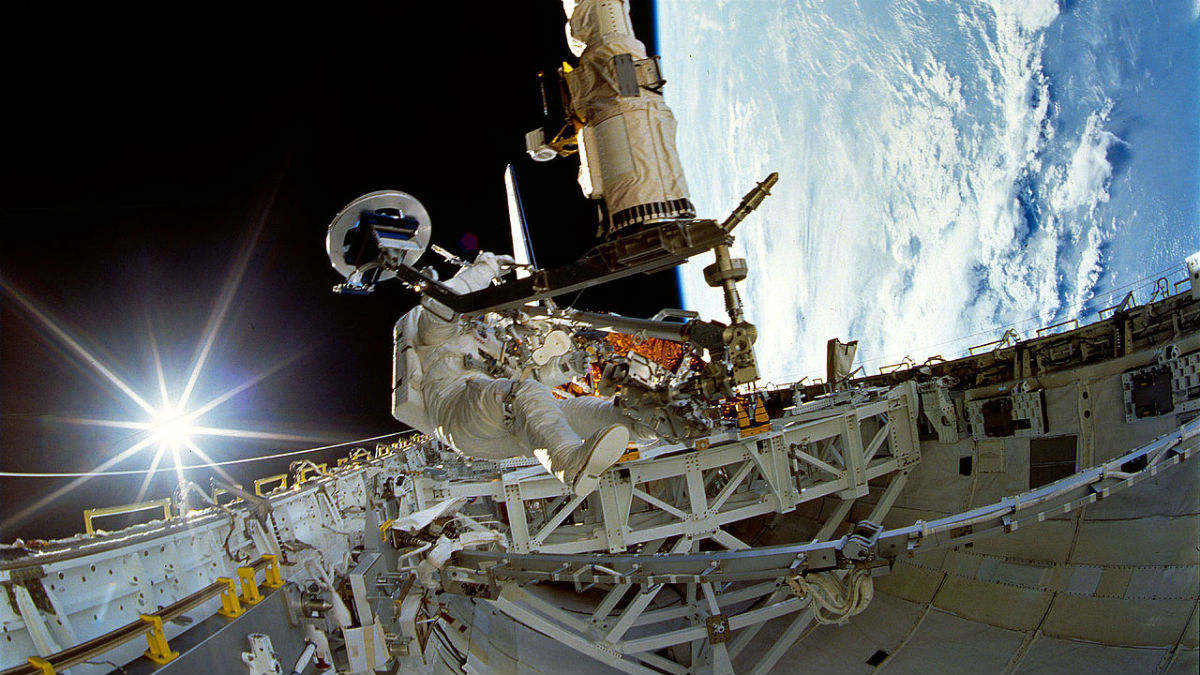
Thanks to Elliott Jessup for contributing some of the questions in this interview. Find Dan Barry today at the helm of Fellow Robots.
Pictures: NASA
